
Parallelogram
Tangrams, invented by the Chinese, are used to develop geometric thinking and spatial sense. Seven figures…

Parallelogram With Lines From opposite Vertices to Midpoints
Illustration to show that when lines from two opposite vertices of a parallelogram to the midpoints…
2 Equal Parallelograms
Illustration used to prove the theorem "Two parallelograms are equal if two sides and the included angle…
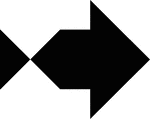
Parrot Fish
Tangrams, invented by the Chinese, are used to develop geometric thinking and spatial sense. Seven figures…
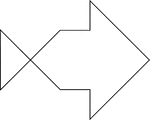
Parrot Fish
Tangrams, invented by the Chinese, are used to develop geometric thinking and spatial sense. Seven figures…
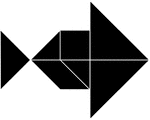
Parrot Fish
Tangrams, invented by the Chinese, are used to develop geometric thinking and spatial sense. Seven figures…

Parrot Fish
Tangrams, invented by the Chinese, are used to develop geometric thinking and spatial sense. Seven figures…

Right Rectangular Prism
Illustration of a right rectangular prism with the height greater than the length and width. The bases…
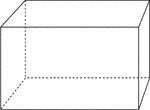
Right Rectangular Prism
Illustration of a right rectangular prism. The bases are congruent rectangles and the opposite faces…
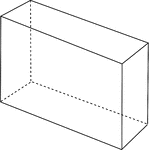
Right Rectangular Prism
Illustration of a right rectangular prism that is viewed at an angle. The bases are congruent rectangles…

Right Rectangular Prism
Illustration of a right rectangular prism that is viewed at an angle. The bases are congruent rectangles…
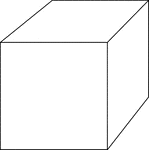
Right Rectangular Prism
Illustration of a right rectangular prism. The bases are congruent rectangles and the opposite faces…

Right Rectangular Prism
Illustration of a right rectangular prism with the height greater than the length and width. The bases…
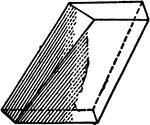
Prismatoid With Quadrilateral Faces
An illustration of a prismatoid with faces that are quadrilaterals.

2 Rectangular Prisms
Illustration of 2 right rectangular prisms. The bases are congruent, but the height of the smaller prism…

2 Rectangular Prisms
Illustration of 2 right rectangular prisms. The bases are congruent, but the height of the smaller prism…
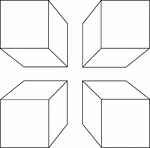
4 Congruent Rectangular Prisms
Illustration of 4 congruent rectangular prisms placed in the shape of a square. They are arranged to…
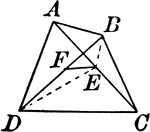
Quadrilateral With Diagonals and Midpoints Joined
Quadrilateral with intersecting diagonals and segment connecting midpoints.
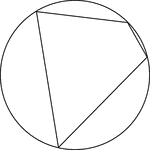
Cyclic Quadrilateral
Illustration of a cyclic quadrilateral, a quadrilateral inscribed in a circle. This can also be described…
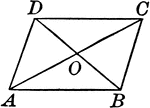
Quadrilateral With Diagonals
Illustration to show that if the diagonals of a quadrilateral bisect each other, the figure is a parallelogram.
Quadrilaterals With Lines Joining Midpoints
Illustrations to show quadrilaterals with lines joining the midpoints of the sides of any quadrilateral,…
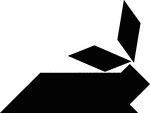
Rabbit Lieing Down
Tangrams, invented by the Chinese, are used to develop geometric thinking and spatial sense. Seven figures…
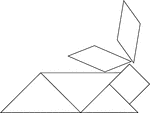
Rabbit Lieing Down
Tangrams, invented by the Chinese, are used to develop geometric thinking and spatial sense. Seven figures…
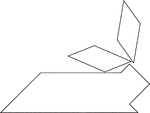
Rabbit Lying Down
Tangrams, invented by the Chinese, are used to develop geometric thinking and spatial sense. Seven figures…
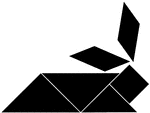
Rabbit Lying Down
Tangrams, invented by the Chinese, are used to develop geometric thinking and spatial sense. Seven figures…

Rabbit Siting on Its Hind Legs
Tangrams, invented by the Chinese, are used to develop geometric thinking and spatial sense. Seven figures…

Rabbit Siting on Its Hind Legs
Tangrams, invented by the Chinese, are used to develop geometric thinking and spatial sense. Seven figures…

Rabbit Siting on Its Hind Legs
Tangrams, invented by the Chinese, are used to develop geometric thinking and spatial sense. Seven figures…

Rabbit Siting on Its Hind Legs
Tangrams, invented by the Chinese, are used to develop geometric thinking and spatial sense. Seven figures…
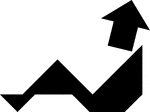
Reclining Man Facing Left
Tangrams, invented by the Chinese, are used to develop geometric thinking and spatial sense. Seven figures…
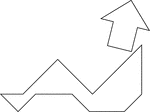
Reclining Man Facing Left
Tangrams, invented by the Chinese, are used to develop geometric thinking and spatial sense. Seven figures…

Reclining Man Facing Left
Tangrams, invented by the Chinese, are used to develop geometric thinking and spatial sense. Seven figures…

Reclining Man Facing Left
Tangrams, invented by the Chinese, are used to develop geometric thinking and spatial sense. Seven figures…
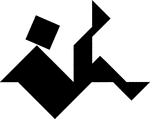
Reclining Man Facing Right
Tangrams, invented by the Chinese, are used to develop geometric thinking and spatial sense. Seven figures…
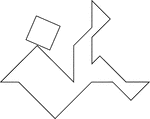
Reclining Man Facing Right
Tangrams, invented by the Chinese, are used to develop geometric thinking and spatial sense. Seven figures…

Reclining Man Facing Right
Tangrams, invented by the Chinese, are used to develop geometric thinking and spatial sense. Seven figures…
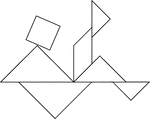
Reclining Man Facing Right
Tangrams, invented by the Chinese, are used to develop geometric thinking and spatial sense. Seven figures…

Rectangle
Tangrams, invented by the Chinese, are used to develop geometric thinking and spatial sense. Seven figures…

Rectangle
Tangrams, invented by the Chinese, are used to develop geometric thinking and spatial sense. Seven figures…

Rectangle
Tangrams, invented by the Chinese, are used to develop geometric thinking and spatial sense. Seven figures…

Rectangle
Tangrams, invented by the Chinese, are used to develop geometric thinking and spatial sense. Seven figures…

Rectangle With Diagonals
Illustration to show that if the diagonals of a parallelogram are equal, the figure is a rectangle.
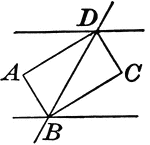
Rectangle Formed When Two Parallel Lines are Cut by a Transversal
Illustrations to show that if two parallel lines are cut by a transversal, the bisectors of the interior…

Rhombus
Tangrams, invented by the Chinese, are used to develop geometric thinking and spatial sense. Seven figures…

Rhombus
Tangrams, invented by the Chinese, are used to develop geometric thinking and spatial sense. Seven figures…

Rhombus
Tangrams, invented by the Chinese, are used to develop geometric thinking and spatial sense. Seven figures…

Rhombus
Tangrams, invented by the Chinese, are used to develop geometric thinking and spatial sense. Seven figures…

Right Triangle
Tangrams, invented by the Chinese, are used to develop geometric thinking and spatial sense. Seven figures…

Right Triangle
Tangrams, invented by the Chinese, are used to develop geometric thinking and spatial sense. Seven figures…

Right Triangle
Tangrams, invented by the Chinese, are used to develop geometric thinking and spatial sense. Seven figures…

Right Triangle
Tangrams, invented by the Chinese, are used to develop geometric thinking and spatial sense. Seven figures…
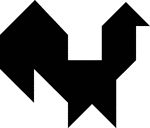
Rooster
Tangrams, invented by the Chinese, are used to develop geometric thinking and spatial sense. Seven figures…

Rooster
Tangrams, invented by the Chinese, are used to develop geometric thinking and spatial sense. Seven figures…
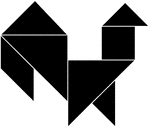
Rooster
Tangrams, invented by the Chinese, are used to develop geometric thinking and spatial sense. Seven figures…

Rooster
Tangrams, invented by the Chinese, are used to develop geometric thinking and spatial sense. Seven figures…
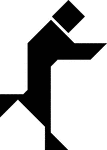
Runner
Tangrams, invented by the Chinese, are used to develop geometric thinking and spatial sense. Seven figures…

Runner
Tangrams, invented by the Chinese, are used to develop geometric thinking and spatial sense. Seven figures…

Runner
Tangrams, invented by the Chinese, are used to develop geometric thinking and spatial sense. Seven figures…

